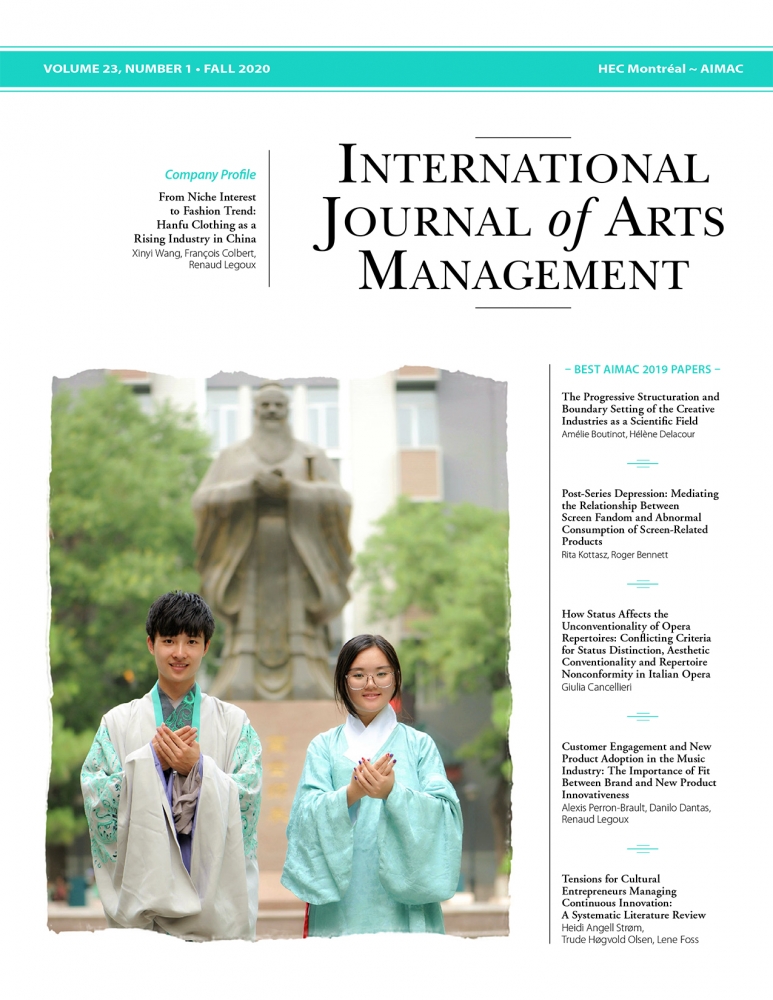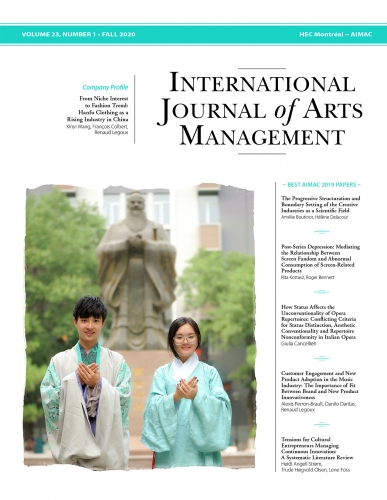IJAM Volume 23 Number 1 (PDF)
Product: Journal
$53.00 CA
FROM THE EDITOR
This issue of IJAM features articles presented at the 2019 AIMAC conference in Venice that were honoured as Best Papers, received a Mention or were written by doctoral students, as well as a Company Profile on Hanfu clothing in China.
In the area of Management, the Best Paper Award was given to Amélie Boutinot and Hélène Delacour for their article analyzing literature on the creative industries. Drawing from a textual analysis of 150 articles in leading management and sociology journals from 1970 to 2018, the authors highlight the evolution in theories, methodologies and industries, and how the articles progressively set boundaries for the creative industries as a scientific field.
n the Marketing area, the Best Paper Award was conferred on Rita Kottasz and Roger Bennett for their article on the effects of post-series depression (PSD) on buying behaviour in the arts and leisure industries. The authors construct and test a model involving fandom, PSD, “consumption hooks” and entertainment-seeking drivers to explain the buying behaviour of avid fans of arts and leisure products.
Also in the Marketing area, Giulia Cancellieri received a Mention for her article on how cultural organizations challenge the logic of status distinction by raising the unconventionality of their repertoires. Based on a statistical analysis of the repertoires of Italian opera houses from 2004 to 2011, the author illustrates the opportunities for middle-status organizations to improve their status position by raising the unconventionality of their repertoires.
Two articles by doctoral students were singled out. Alexis Perron-Brault and his co-authors, Danilo Dantas and Renaud Legoux, shed light on how, why and when customer engagement impacts new product adoption, depending on the perceived innovation of a new music album. Heidi Angell Strøm and her co-authors, Trude Høgvold Olsen and Lene Foss, provide a literature review on the tensions that cultural entrepreneurs face when managing continuous innovation; the resultant conceptual framework classifies managerial, entrepreneurial, innovation-related and network-related tensions.
Finally, in the Company Profile for this issue of the Journal, Xinyi Wang, François Colbert and Renaud Legoux provide insights into why the cultural trend of Hanfu clothing is being adopted by more and more young people in China to recreate a tradition of ethnic and cultural identity. In addition, they identify the current challenges and strategic implications for Hanfu companies when the market is flooded with low-cost imitations and how to manage the tension between popularity and authenticity.
I wish you insightful reading.
André Courchesne
Editor

